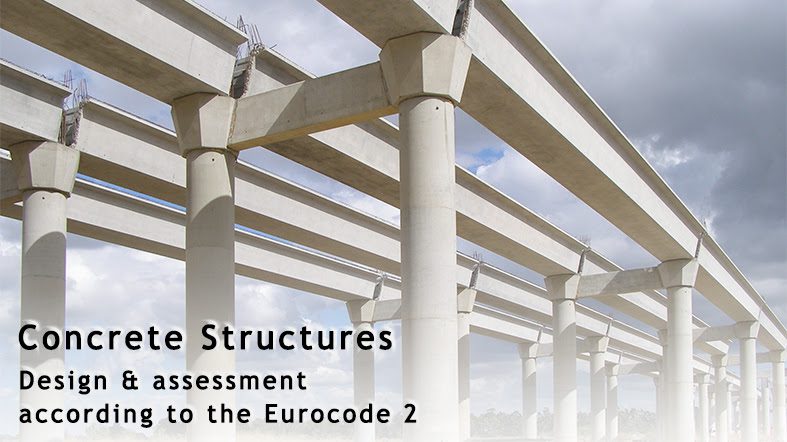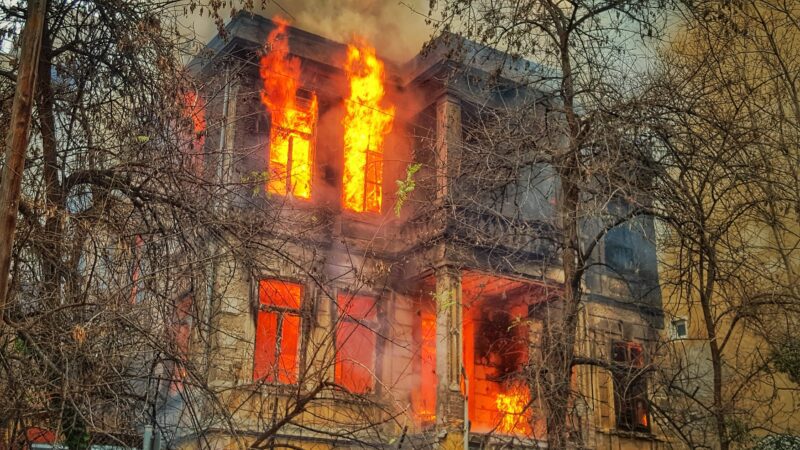Principles of Structural Fire Engineering
Online course |
|
50 hours / 6 weeks |
|
To be determined |
Introduction
Fire represents one of the most severe hazards to which buildings and built infrastructure may be subjected during their service life. In recent years, fires are becoming a growing concern due to the increased number of high-rise buildings, higher fuel loads in buildings, and greater expectations from society in terms of safety and security. The recent fire-induced structural collapses have increased public awareness of fire safety issues and call for designers to enhance fire safety. Unfortunately, there are limited textbooks and references guides in the field of structural fire engineering. The structural engineering and construction industry is seeking engineering graduates with knowledge of fire analysis and design. This course hopes to bridge this existing knowledge gap.
Objectives
The primary objectives of this course are:
- To learn the behavior of structural components under fire conditions.
- To gain design experience in fire resistance concepts.
- To learn basic fire safety design issues.
By the end of this course, the student should be able to calculate/determine:
- Material properties at elevated temperatures.
- Temperatures profiles in structural assemblies.
- Fire resistance of steel and concrete structures.
Chapter 1. Introduction to Fire Safety
- – Importance of Fire Safety
- – Codes and Standards
- – Performance-based Fire Design
Chapter 2. Fire Safety in Buildings
- – Fire Safety Objectives
- – Fire Safety Concepts
- – Controlling Fire Spread
Chapter 3. Fire and Heat
- – Fuels
- – Combustion process
- – Description of Fires
Chapter 4: Fire Resistance tests & Methods
- – Methods of Assessing Fire Resistance
- – Non-standard Evaluations
Chapter 5: Design of Structures Exposed to Fire
- – Review of Mechanics, Loads, Load Combinations
- – Structural Design at Normal Temperatures
- – Structural Design for Fire Conditions
Chapter 6: Steel Structures
- – Behavior of Steel Structures in Fire
- – Material Properties at Elevated Temperatures
- – Protection Systems
- – Calculation Methods for Evaluating Fire Resistance
- – Design of Steel Members Exposed to Fire
Chapter 7: Concrete Structures
- – Behavior of Concrete Structures in Fire
- – Material Properties at Elevated Temperatures
- – Protection Strategies
- – Calculation Methods for Evaluating Fire Resistance
- – Design of Concrete Members Exposed to Fire
M. Z. Naser
M. Z. Naser, Ph.D., P.E., is a professional engineer and researcher. He specializes in structural fire engineering research, computational intelligence, and retrofitting of damaged/aging structures and is active in various engineering communities and journals.
The course is run in an online format. Throughout our innovative and powerful Virtual Campus, a dynamic and flexible environment is provided so the student can follow the course at his or her pace.
Within this virtual platform, students are in continuous contact with professor in a tailored way, solving questions together, and widening knowledge and acquiring new skills. Students can also interact with other students and professors through webinars and forums.
Plenty of content can be found in the Campus: eLearning material, videos, technical articles, manuals, complementary documentation, real examples and exercises.
This course is aimed at senior undergraduate students, graduate students, and practicing civil and structural engineers. This course can be of interest to architects and building officials. Most of the course requires hand-calculation and the use of spreadsheets (Excel). A discussion on open-access fire engineering software will also be explored and taught from the first principles.
As evidence of knowledge gained throughout the course, a certificate will be issued from the Virtual platform. This certificate is based on the modern technology Blockchain, which increases security, prevents fraud, builds trust and ensures you’re ready for the future.
This course will be of interest to student engineers seeking industry work, as well as civil and structural engineers, as well as architects.
Introduction
Fire represents one of the most severe hazards to which buildings and built infrastructure may be subjected during their service life. In recent years, fires are becoming a growing concern due to the increased number of high-rise buildings, higher fuel loads in buildings, and greater expectations from society in terms of safety and security. The recent fire-induced structural collapses have increased public awareness of fire safety issues and call for designers to enhance fire safety. Unfortunately, there are limited textbooks and references guides in the field of structural fire engineering. The structural engineering and construction industry is seeking engineering graduates with knowledge of fire analysis and design. This course hopes to bridge this existing knowledge gap.
Objectives
The primary objectives of this course are:
- To learn the behavior of structural components under fire conditions.
- To gain design experience in fire resistance concepts.
- To learn basic fire safety design issues.
By the end of this course, the student should be able to calculate/determine:
- Material properties at elevated temperatures.
- Temperatures profiles in structural assemblies.
- Fire resistance of steel and concrete structures.
Chapter 1. Introduction to Fire Safety
- – Importance of Fire Safety
- – Codes and Standards
- – Performance-based Fire Design
Chapter 2. Fire Safety in Buildings
- – Fire Safety Objectives
- – Fire Safety Concepts
- – Controlling Fire Spread
Chapter 3. Fire and Heat
- – Fuels
- – Combustion process
- – Description of Fires
Chapter 4: Fire Resistance tests & Methods
- – Methods of Assessing Fire Resistance
- – Non-standard Evaluations
Chapter 5: Design of Structures Exposed to Fire
- – Review of Mechanics, Loads, Load Combinations
- – Structural Design at Normal Temperatures
- – Structural Design for Fire Conditions
Chapter 6: Steel Structures
- – Behavior of Steel Structures in Fire
- – Material Properties at Elevated Temperatures
- – Protection Systems
- – Calculation Methods for Evaluating Fire Resistance
- – Design of Steel Members Exposed to Fire
Chapter 7: Concrete Structures
- – Behavior of Concrete Structures in Fire
- – Material Properties at Elevated Temperatures
- – Protection Strategies
- – Calculation Methods for Evaluating Fire Resistance
- – Design of Concrete Members Exposed to Fire
M. Z. Naser
M. Z. Naser, Ph.D., P.E., is a professional engineer and researcher. He specializes in structural fire engineering research, computational intelligence, and retrofitting of damaged/aging structures and is active in various engineering communities and journals.
The course is run in an online format. Throughout our innovative and powerful Virtual Campus, a dynamic and flexible environment is provided so the student can follow the course at his or her pace.
Within this virtual platform, students are in continuous contact with professor in a tailored way, solving questions together, and widening knowledge and acquiring new skills. Students can also interact with other students and professors through webinars and forums.
Plenty of content can be found in the Campus: eLearning material, videos, technical articles, manuals, complementary documentation, real examples and exercises.
This course is aimed at senior undergraduate students, graduate students, and practicing civil and structural engineers. This course can be of interest to architects and building officials. Most of the course requires hand-calculation and the use of spreadsheets (Excel). A discussion on open-access fire engineering software will also be explored and taught from the first principles.
As evidence of knowledge gained throughout the course, a certificate will be issued from the Virtual platform. This certificate is based on the modern technology Blockchain, which increases security, prevents fraud, builds trust and ensures you’re ready for the future.
This course will be of interest to student engineers seeking industry work, as well as civil and structural engineers, as well as architects.
More info
Finish this course and get a certificate based on Blockchain
Principles of Structural Fire Engineering

Blockchain technology makes the certificate incorruptible, enabling companies to verifiy its autenticity.





Reviews
There are no reviews yet.